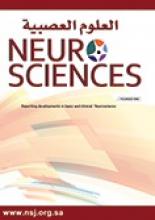To the Editor
We read with interest the article by Kim et al. on a 56-year-old female who underwent arthroscopic meniscal repair at the age of 53 years and subsequently developed neuropathic symptoms and signs, such as allodynia, hyperalgesia, skin colour change, and edema in the left lower extremity, which were attributed to a local lesion of the left common peroneal nerve during surgery and interpreted as complex regional pain syndrome (CRPS).1 Since 3 epidural nerve blocks at the L4/5 interlaminar space for suspected CRPS were of no significant benefit, she underwent lumbar sympathetic block or neurolysis (LSN) anterolateral to the L3 vertebra, which was complicated by anal numbness and fecal incontinence.1 After the detection of a sequestrated disc prolapse L2/3, the patient underwent inter-body fusion L2/3, partial laminectomy L2, and discectomy L2/3, resulting in a significant improvement of symptoms and signs.1 The study is compelling but has limitations that should be discussed.
We disagree with the notion that L2/3 disc herniation was due to or developed after LSN.1 A strong argument against LSN as the cause of disc herniation is that the patient had had allodynia, hyperalgesia, skin colour change, and edema in the left lower extremity for 3 years beginning shortly after arthroscopic meniscal repair, well before LSN.1 The symptoms were attributed to a local iatrogenic lesion of the left common peroneal nerve during arthroscopy. However, not only an axonal lesion of sensory fibers on nerve conduction studies (NCSs) was found but also abnormal spontaneous activity in the left anterior tibial and left extensor digitorum brevis muscles on needle EMG.1 Despite these findings the patient was diagnosed with CRPS.1 A strong argument against CRPS, however, is that the patient not only had a sensory lesion but also a lesion of motor fibres supplying peroneal nerve innervated muscles. It is therefore conceivable that gonalgia was misinterpreted as a meniscal lesion and that post-arthroscopic pain was misinterpreted as CRPS but was already the clinical manifestation of a disc herniation. Did the patient ever develop urinary hesitancy during the 3 years of presumed CRPS? Was there evidence for muscle weakness in any of the left lower limb muscles, particularly the foot extensors? We should know whether the index patient underwent an MRI of the lumbar spine prior to left knee arthroscopy or shortly after the onset of CRPS.
We also disagree with the pathophysiological explanation that the herniated disc was due to hypoxia of the disc tissues as a result of vasoconstriction or thrombosis of the blood vessels supplying it.1 Such an explanation is not plausible since the injection of the pure alcohol into an artery at level L3 should have affected not only the disc L2/3 but also other structures surrounding the disc, which was not the case. No blood was aspirated prior to the alcohol injection, making the intra-arterial injection of alcohol unlikely. Another argument against LSN as the cause of herniation of disc L2/3 is that LSN was performed anterolateral to the third lumbar vertebra, thus without any contact to disc L2/3.
There is a discrepancy between Table 1 and the case description regarding the time course of the clinical manifestations. According to Table 1, the patient developed allodynia and hyperalgesia one month prior to LSN but according to the case description, allodynia and hyperalgesia developed shortly after arthroscopy three years before. We should know the exact sequence of symptoms, diagnostic measures, and therapeutic measures used in the index patient and whether CRPS was really considered a complication of arthroscopic meniscal removal or developed later not contemporaneously with this surgery.
Overall, the interesting study has limitations that put the results and their interpretation into perspective. Addressing these issues would strengthen the conclusions and could improve the status of the study. Before blaming LSN for disc herniation, alternative causes must be adequately ruled out and the time course of symptoms, signs, and instrumental findings reconsidered. Even if history and clinical exam do not suggest a radicular lesion, proximal, lumbar lesions of sensory and motor fibre should be adequately ruled out as causes of the knee respectively distal lower limb pain and sensory disturbances.
Reply from the Author
We focused on the procedure and its complications in this paper. Therefore, the patient’s medical history and diagnosis of CRPS are briefly described. I am sorry that you have raised questions about this paper, and I fully understand your correspondence.
In 2019, the patient underwent arthroscopic meniscal repair. After the surgery, a hematoma was found on the leg, and the removal operation was repeated. After hematoma removal surgery, numbness and tingling sensation developed in left lower leg lateral side and dorsum of foot, respectively. And then, she was diagnosed with the peroneal nerve injury.
The patient has been doing that, and in 2020, she visited the orthopedic department of our hospital, and a 2nd look arthroscopy and a biopsy of the hematoma area were also performed. After the orthopedic surgery at our hospital, the symptoms persisted, and under suspicion of CRPS, the patient was referred to a pain clinic and continued treatment.
After the procedure, we felt very sorry for having cauda equina syndrome, and we tried to find the cause. Although the patient has lower leg pain and numbness, upon medical history, she had never experienced back pain, hip pain, or any other symptoms in the thigh area. We searched for the lumbar image before the procedure and asked the patient again, but there was no image data. In conclusion, we ruled out disc problems before the procedure and considered the possibility of disc damage due to the procedure.
- Copyright: © Neurosciences
Neurosciences is an Open Access journal and articles published are distributed under the terms of the Creative Commons Attribution-NonCommercial License (CC BY-NC). Readers may copy, distribute, and display the work for non-commercial purposes with the proper citation of the original work.
References
- 1.






